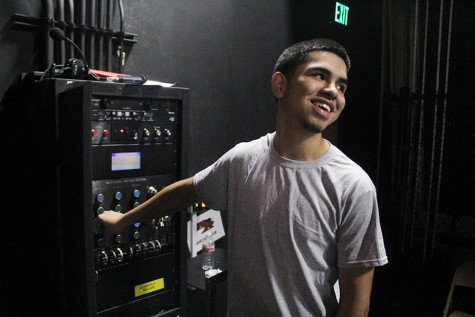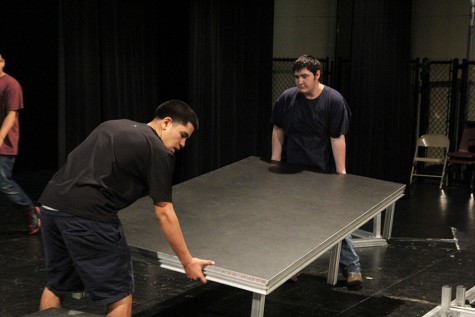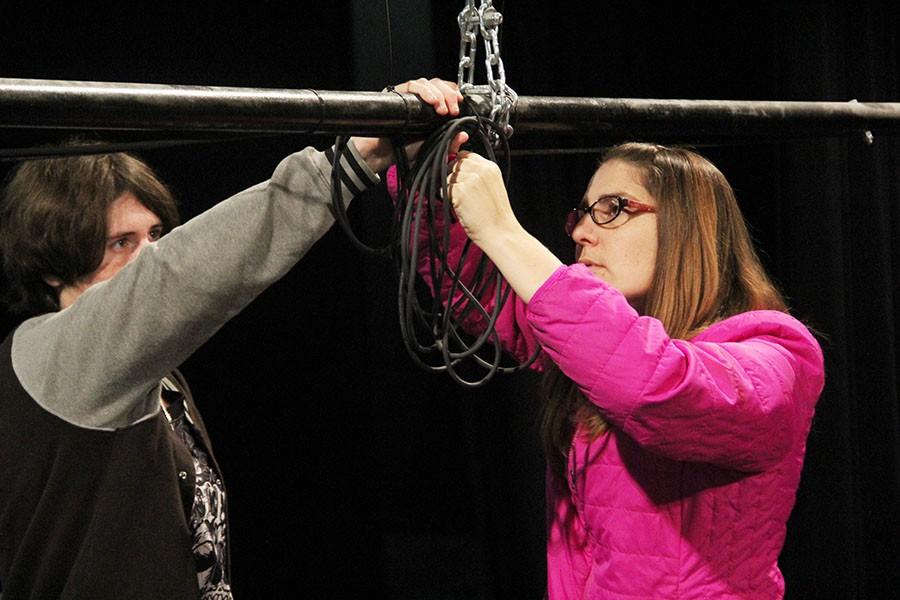Technical theatre students work behind the scenes for musical
Corey Parker and Techinical Director Holly Flannery coil a wire for later use in the show.
January 22, 2016
Putting on a play is one thing, but putting on a musical is a whole other ordeal. Months of hard work and preparation goes into a musical, from the costumes and set design to the lighting and sound. Theatre technicians work behind the scenes to put together the finished production.
“When putting on a musical, there’s a lot more of everything; you have more cast, you have more people backstage, more crew, you have more scenery, and you have more things,” Technical theatre director Holly Flannery said. ”You have the lighting, you have sound issues, and you’ve got the orchestra performing.”
Head soundboard operator Kristian Moraga, a sophomore, manages all the pitches between the actors. Transitioning from fall show to musical isn’t all smooth sailings.
“When I was sound board operator for the fall show, I was all by myself,” Moraga said. “Having other people there kind of freaked me out.”
A lot of work goes into putting on a musical, but it’s all in a days work for senior props manager Hannah Hoffmann. From making to-do lists to figuring out what has to be done and doing it, Hoffman has enjoyed the behind the scenes aspect of the musical.
“You get to use power tools which is pretty cool. Building is the best part,” Hoffmann said. “I like all of my people a lot, and just watching the show coming together is really cool.”

Junior Dominic Ureste adjusts the level of the lighting during fifth period.
A typical rehearsal day for theatre technicians is typically six to eight hours a week for two months. That’s why tech week is called Hell Week.
“Everybody gets together and talks about what we need to do,” Hoffmann said. “And split up into groups. I try to get everything checked off my to-do list.”
With all the seriousness of putting on the production, rehearsing is an ordeal within itself.
“Before it’s usually chaos, french fries and ketchup, they do warm-ups and make sure everything is ready, and then we run through the show,” sophomore Gabriella Trevino-Bandy said.
After months of preparation, it’s time for the technicians to get things going. With Flannery in the sound booth, it’s the technician’s job to run the show.
“Really it’s just the stage manager talking to the crew and making sure that everything gets dealt with,” Flannery said. “So it’s kind of like an air traffic controller; that’s what the stage manager is to the show. Making sure everything is going at all times, everything is happening.”
While the actors are on stage, the tech theatre students are behind the scenes, creating backdrops, building sets, adjusting sound and lighting, and of course, opening the curtain.
“I like to see the press, I enjoy seeing our students designing all of our signs and having them go from a drawing to the show,” Flannery said. “The creative part of it.”

Dominic Ureste and Cody Coffey lift a table for the set.



